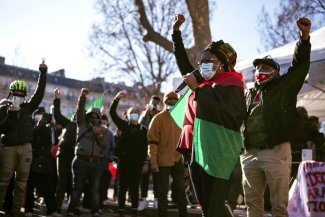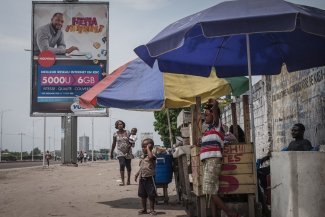Last September, the International Labour Organization (ILO) released a sobering figure: 168 million children are still in child labour. Or put another way, ten per cent of all children worldwide are involved in work that deprives them of their childhood.
Although this figure is 78 million less than when the world started counting in 2000, considering the amount of donor-funding invested in the last two decades, it’s a disappointing result.
Moreover, it now obvious that the goal the world set itself in 2010 to eradicate the worst forms of child labour by 2016 will not be met.
It appears that the enthusiasm of the late 1990s has given way to millennium fatigue.
Brazil, however, is one country which has made significant progress in reducing child labour.
Last week, it organised the Third Global Conference on Child Labour in Brasilia, Brazil’s political powerhouse. An unprecedented 1,300 delegates from over 150 countries gathered to discuss the next stage in the fight against child labour.
President Dilma Rousseff opened the conference, various ministers presided sessions and the former president, Lula da Silva, closed it. This provided a strong signal that this was not just another international child labour meeting.
For Brazil, it was one of the most important political events of the year.
To explain why, we have to go back to some recent developments, including the child labour data gathered to measure progress over the last decade.
Progress
There has been sustained progress, but surprisingly, this has been most significant (a reduction of 47 million or 60 per cent) since 2008.
Given that 2008 marked the peak of the global financial crisis, resulting in significant development aid and donor budgets cuts, one would have expected the opposite.
You could argue that major economies affected by child labour, such as Brazil, were less affected by the crisis. But a deeper analysis indicates that smart policy choices played a bigger role than economic growth or aid.
In April this year, the first Global Report on Child Labour focused on economic vulnerability and social protection, confirming that child labour is driven, in part, by the kind of household vulnerabilities associated with poverty, risk and shocks, and that social security is critical to mitigate such circumstances.
Brazil has demonstrated how increasing social protection and measures to ensure that children go to school through conditional cash transfer systems can be effective.
Tereza Campello, the Brazilian Minister of Social Development, told the conference this has been one of the main reasons why Brazil has been able to make twice as much progress, on average, in the fight against child labour.
Unsurprisingly, Brazil was one of the driving forces behind the promotion of social protection floors and the adoption of the related international standard in 2012.
In May this year, the International Programme on the Elimination of Child Labour (IPEC)’s 2012 activity report acknowledged that time-limited projects, which were not fully incorporated into national legal, fiscal and institutional frameworks, did not deliver sustained results.
In addition, new data from the September report corroborates the fact that the biggest impact comes from investment in more systemic and integrated approaches which support the development of effective institutional capacities of governments and public service systems.
Brazil has produced impressive results with a fully equipped and trained labour inspectorate, including special mobile inspection groups, targeting places where it is most needed.
These are clear signals to the donor community.
Continued focus
But the fight against child labour also needs to see a continued focus on expanding children’s access to free, quality education.
The world will need an estimated 1.7 million additional primary school teachers to meet the ‘Education For All’ goals by 2015.
Brazil, like so many other countries, is struggling to improve its public education system. Tens of thousands marched the streets of Rio on the eve of the conference, calling for social dialogue, better working conditions and training.
Globally, a shameful increase of child labourers in the informal economy has been recorded, even in services and manufacturing. Therefore, future work must increase labour protection and work on a transition from the informal to the formal economy.
As many as 10.5 million children – mainly girls – work as domestic workers. Four out of five are said to endure hazardous conditions although the true figure is bound to be much higher as domestic work is hidden behind the closed doors of private households.
In September, the Domestic Workers Convention entered into force, and earlier this year Brazil’s six and a half million domestic workers won equal rights thanks to sustained campaigning by domestic workers’ trade unions.
In 2011, the UN Human Rights Council endorsed the Guiding Principles on Business and Human Rights, which makes a clear distinction between the obligation of governments to protect, and the responsibility of businesses to respect, human rights.
The conflation of these two responsibilities has hindered corporate social responsibility policies from making real progress in the last two decades.
The ‘protect, respect and remedy’ framework should eventually generate more transparency and restore the employment relationship in complex supply chains, as the increased risks of informal or shady middlemen and subcontractors must be avoided.
Brazil has transformed this soft law framework into effective legal accountability of businesses when it comes to slavery throughout supply chains in interesting legislative initiatives at a national and state level.
Undeniably, Brazil has once again demonstrated its geopolitical leadership in another policy area.
The Conference Declaration called for a renewed emphasis on child labour policy, social protection, education, social dialogue, a continued focus on agriculture and a new focus on the informal economy, labour inspection and due diligence in supply chains.
And it is indeed along these lines that real and sustainable progress has been made.
Last week, a revitalising political wind blew through the global fight against child labour.
There is new hope for the world’s 186 million child labourers.









